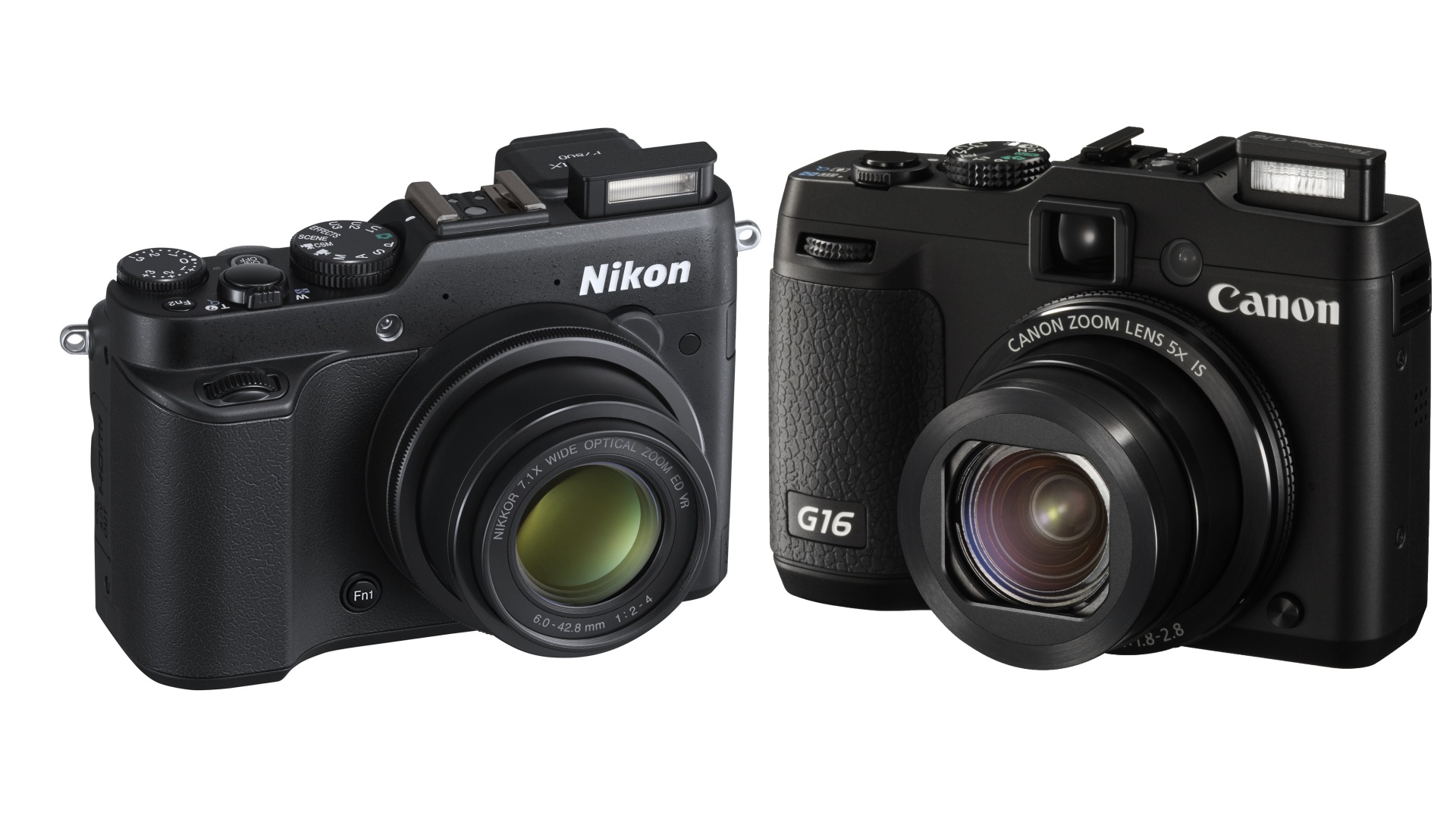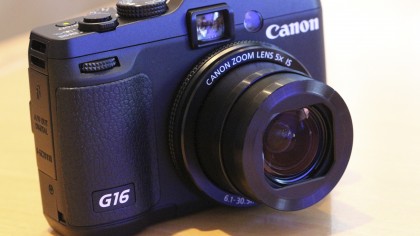Canon PowerShot G16 vs Nikon Coolpix P7800
Two premium compacts battle it out

Often billed as the ideal companion for a DSLR when its too big, heavy or inconvenient, the premium compact camera sector of the market is one that seems to continue to do well in an otherwise declining market.
Premium compacts such as the Canon PowerShot G16 and Nikon Coolpix P7800 appeal to enthusiast photographers because they allow full manual control and shoot in raw format.
Canon's G series has long been considered the gold standard of premium compacts. The latest model, the G16, features a 12.1 million-pixel sensor and inbuilt Wi-Fi. It goes square on head to head with the Nikon P7800, which also features a 12.1 million pixel sensor, but comes with an integrated electronic viewfinder.
Here we compare the two to see which is the better investment.
Canon G16 vs Nikon P7800: Handling
The G16 is easy to use, with menus arranged very sensibly with a number of direct access dials and buttons. On top of the camera, you'll find two dials, one for switching modes and another for adjusting exposure compensation. A dial on the front of the camera is used to adjust aperture or shutter speed (depending on the shooting mode).
Meanwhile, the P7800 is another nicely built camera, with a pleasing number of dials and buttons. Here you'll also find an exposure compensation dial, with a handy light which indicates when it has been moved away from 0. There are also two handy customisable function buttons along with a quick menu button for accessing used settings.
Winner: Draw
Get daily insight, inspiration and deals in your inbox
Sign up for breaking news, reviews, opinion, top tech deals, and more.
Canon G16 vs Nikon P7800: Image Quality
Our lab tests indicate that the Canon produces better raw format files than the Nikon, which is useful if you like to work with your images in post-production. We've found that real world images display a great amount of colour and detail. Low light performance is also excellent, as is the ability to shoot at 9fps. The Canon's lens, offering a maximum aperture of f/1.8-2.8 also beats the Nikon's.
Image quality is also very good from the P7800, with our labs tests suggesting that JPEG images are marginally better (for dynamic range and signal to noise ratio) than the Canon – good if you don't want the hassle of post production. Although the lens has a longer zoom range (7.1x compared to 5x), it doesn't have the maximum wide aperture of the G16. This might make a more appealing proposition to travelling photographers.
Winner: Canon G16

Canon G16 vs Nikon P7800: screens and viewfinders
The G16 keeps the same fixed screen as the G15. It's a good performer, viewable from a decent range of angles. It would be nice to see a touchscreen, especially as its sibling the Canon PowerShot S120 has an excellent one. The direct viewfinder is basically a hole in the top of the camera, so there's no information (such as aperture) to work with. Previous generations of the G series had an articulating screen, but Canon seems to have decided that a fixed screen is a better all round option, and it does keep the size down.
Nikon is giving both barrels in the EVF and screen war, with a fully articulating screen, useful for composing from awkward angles and self-portraits. The screen is also an RGBW device, with the W standing for white, representing the extra white pixels which give it increased brightness and contrast. Meanwhile, Nikon scrapped its optical viewfinder in the last generation of the P range, but it has now reintroduced a finder - an electronic one. It's only small, but it does have 921,000 dots and is useful. There's no sensor for judging when it has been lifted to your eye, however, which is a shame.
Winner: Nikon P7800

Canon G16 vs Nikon P7800: extras
The G16's inbuilt Wi-Fi can be used to transfer images across to a smartphone or tablet, or upload directly to services such as Facebook, making it good for social sharers. Unfortunately, the free app (available for iOS and Android), doesn't give you the ability to control the camera remotely, which seems a shame. The G16 also has a number of scene modes and digital filters as well as the fun "Hybrid Auto" mode which creates a short video compiled of clips shot before each photo taken per day. The new star mode enables the easy and automatic capture of star trails, star time lapse and star nightscape.
Amy has been writing about cameras, photography and associated tech since 2009. Amy was once part of the photography testing team for Future Publishing working across TechRadar, Digital Camera, PhotoPlus, N Photo and Photography Week. For her photography, she has won awards and has been exhibited. She often partakes in unusual projects - including one intense year where she used a different camera every single day. Amy is currently the Features Editor at Amateur Photographer magazine, and in her increasingly little spare time works across a number of high-profile publications including Wired, Stuff, Digital Camera World, Expert Reviews, and just a little off-tangent, PetsRadar.
